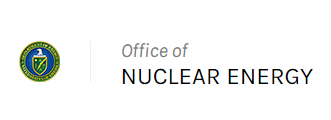Part 2 of 2 Parts (Please read Part 1 first)
The NERA issued a report in November of 2016 titled The economic impact of ONR safety regulation in which it said that the ONR was an “impressive regulator.” It reported on a number of positive findings including ONR’s current regulatory strategy for Sellafield and the Generic Design Assessment process. However, the report also concluded that there was room for improvement. The NERA report was revised in August and December of 2017. The ONR responded to the NERA report by listing the actions that it was prepared to take based on the reports recommendations.
The ONR said, “Overall we believe that NERA's report, and the positive engagement with the authors, has enabled us to identify a number of real improvement measures in terms of our awareness of, and approach to, our economic impact on the industry we regulate. Ensuring a safe and secure nuclear industry will always be our overriding priority and we are robust in upholding the law, using our regulatory enforcement powers wherever necessary. Any actions identified in response to NERA's report are consistent with this priority.”
The NERA report laid out five areas of consideration for the ONR. First, the report said that the ONR should encourage more external comments and comparisons. Second, the report suggested that there should be more effective promotion and monitoring of the Enabling Regulation initiative. Third, the ONR should improve its understanding of the costs of regulatory decisions. Fourth, the ONR should make use of economic advice in the framing and assessment of some issues. Fifth, the ONR should refine its current guidance as far as is practical.
The ONR expressed its belief that, in general, its activities are aligned well with the themes of the Regulators’ Code. These themes include the following ideas for the behavior of regulators: First, regulators should execute their duties in a way that helps those they regulate to comply with regulations. Second, there should be easy ways for those who are regulated to provide feedback. Third, regulatory activities should be based primarily on risk. Fourth, the regulators should share important information about compliance and risk. Fifth, the regulators should make sure that there is clear information, guidance, and advice provided to help regulated parties to comply. Sixth, regulatory activities should be transparent to the regulated.
The ONR said, “In particular our regulatory framework and enabling approach embrace proportionality, our approach with other regulators is highly collaborative, and the publication of our staff guidance for inspection and assessment provides a good basis for openness and transparency.”
The ONR also said that there have been a number of significant improvements such as the introduction of the Security Assessment Principles and the publication of its Risk Informed Decision Making guidance. There will be another update on ONR’s compliance with the Regulators’ Code in 2020. The new update will coincide with the end of its current five year strategy.
Since the U.K. voted to leave the European Union in 2016, the ONR has been scrambling to put in place a set of nuclear regulations that will match the Euroatom regulations in order for the U.K. to be able to purchase nuclear technology and fuel from the E.U.
